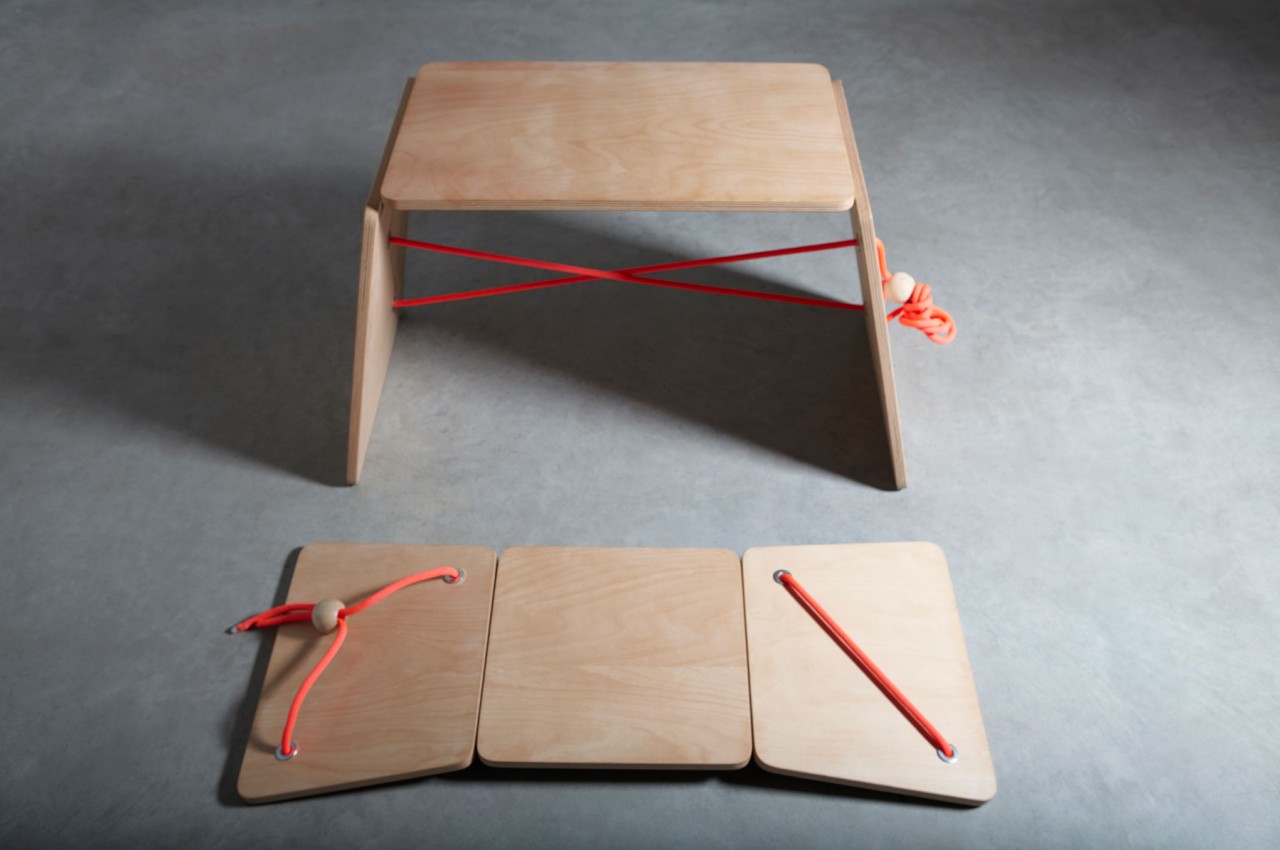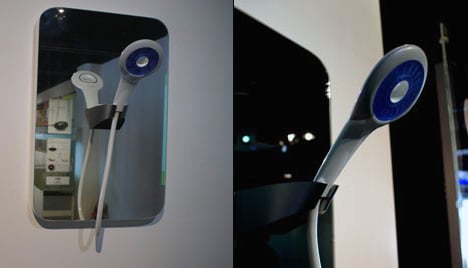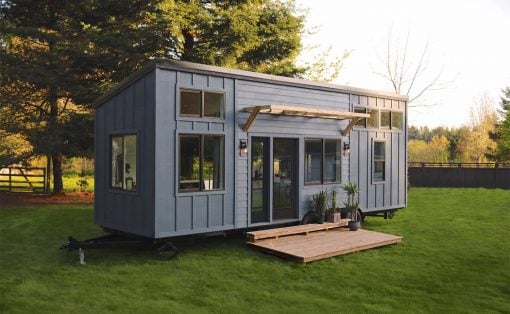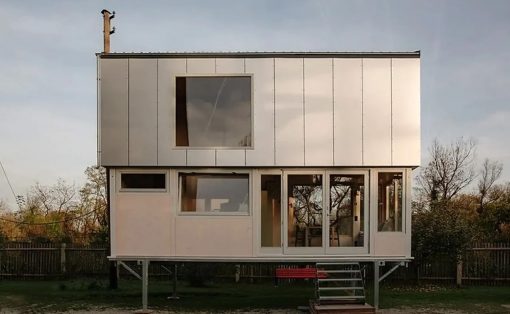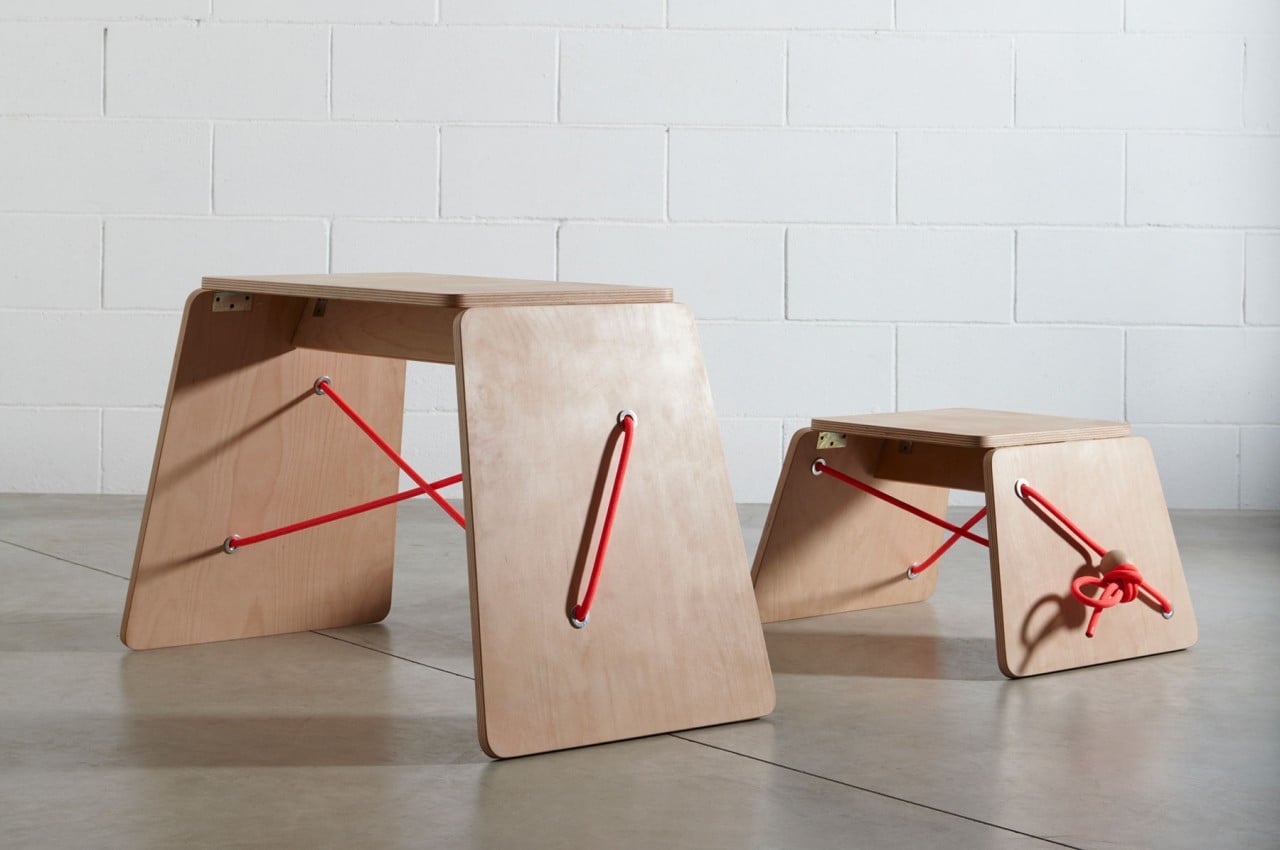
While most people recognize education as a basic human right, the painful truth is that, just like many other rights, it isn’t universally available everywhere. There is always a resource problem, from books to teachers to even rooms to hold classes in. While that last one might sound superficial compared to the lack of books, a good and comfortable environment can go a long way in improving children’s reception to lessons. In some cases, a permanent classroom isn’t even an option, so makeshift rooms are the only recourse. Of course, that still requires proper desks and chairs for use, but you don’t have to go overboard with these. While cheap plastic furniture sounds like the easiest solution, this design concept shows an alternative that isn’t only more sustainable but also more flexible when it comes to storage and portability as well.
Designer: Claudio Larcher
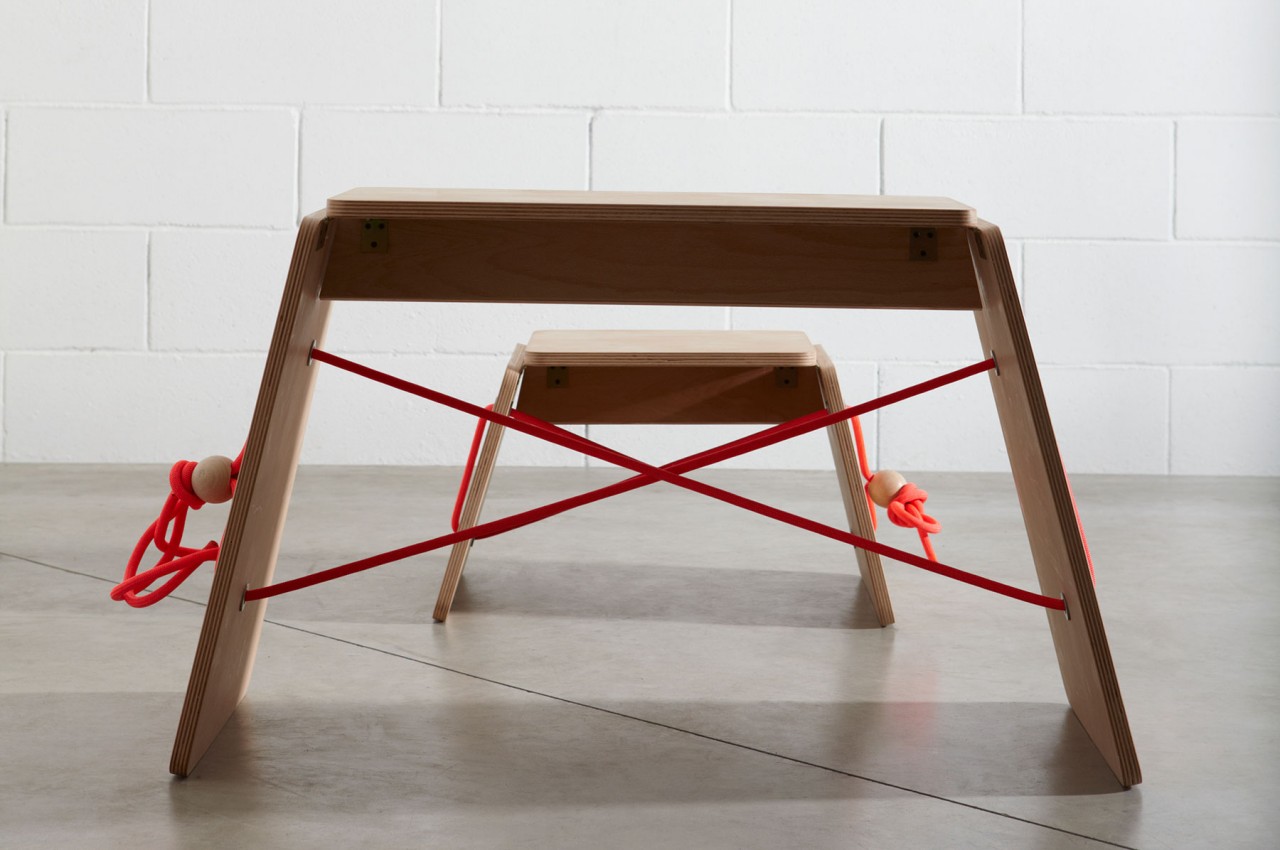
In areas with no fixed rooms designated as classrooms, being able to move around or clear out desks and chairs is just as important as having school furniture at all. Typical tables and chairs are single solid pieces that are difficult to move around, not to mention keeping them in storage. A good portion of time is wasted in setting and cleaning up such rooms, presuming they even have rooms or furniture. Even simple school furniture can be expensive, and cheap plastic options have hidden costs that actually make them more expensive in the long run.
Paco y Paco is a design concept that tries to check all the right boxes for a low-cost school furniture solution that is also sustainable and, to some extent, fun. Both the desk and the stool share the same basic shape of wooden planks connected in a row. The basic idea is for these to fold into trapezoidal form, with the two sides serving as legs while the middle one is the actual tabletop or seat. When no longer in use, they can lay flat for easier carrying and storage until their next use.
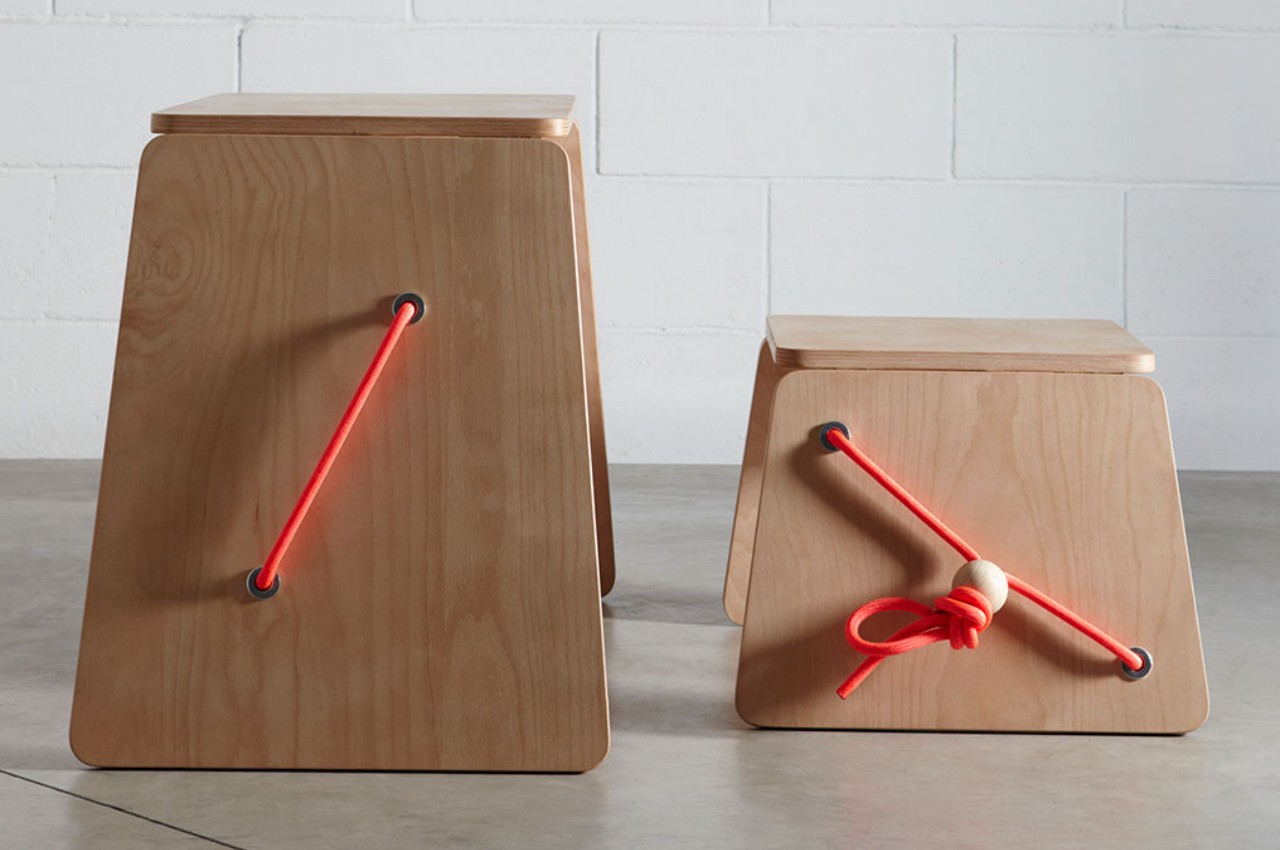
The design of the furniture is also quite interesting in how it uses ropes as the primary mechanism to fold or collapse the two. Many people, kids included, will be familiar with such cords used to loosen or tighten bags. A wooden ball acts as the stopper to keep the knot from slipping, while metal grommets keep the rope from fraying. With perhaps the exception of the rope, the entire desk and chair could be made from 100% sustainable materials that can be easily made or procured anywhere.
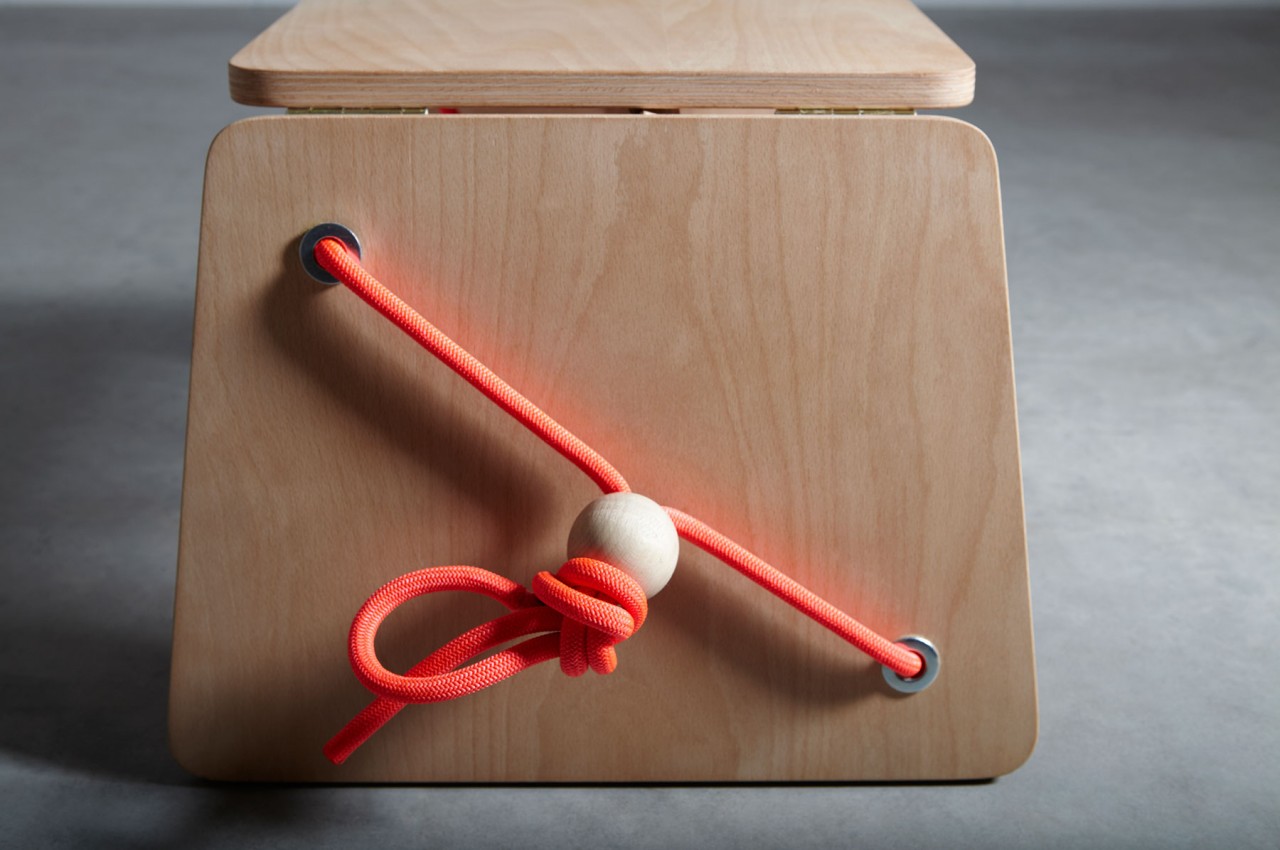
It’s probably arguable whether such a furniture design is going to be comfortable, but for schools or villages with meager budgets, it’s definitely better than nothing. Perhaps a bigger question is the stability of the design, especially the chair, given how a rope is probably the only thing that will keep it from collapsing beneath a child’s weight.
